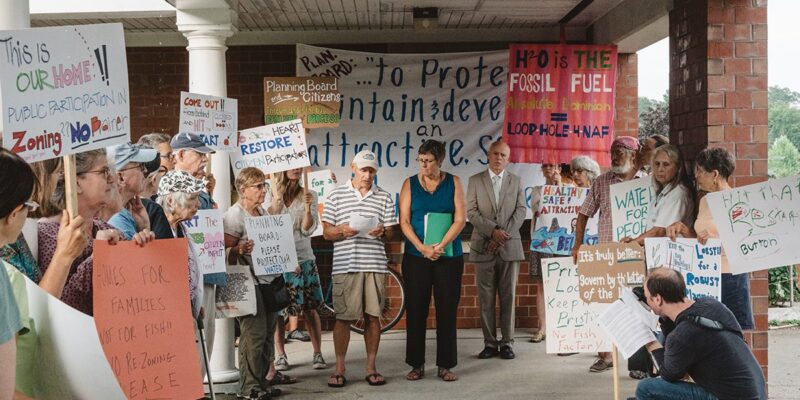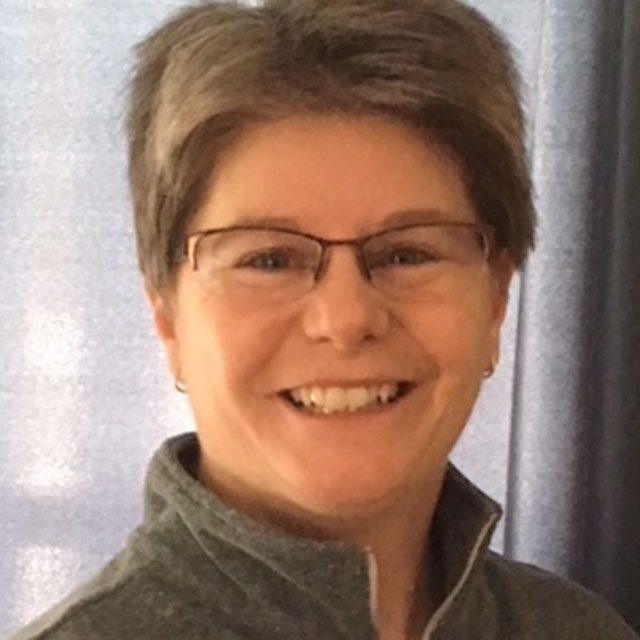BELFAST — When Ellie Daniels and Donna Broderick bought their house on Perkins Road in 2015, it was their dream retirement home.
Built in 2011, it’s a net-zero house, meaning it produces as much energy as they consume in a year. Cement floors, extra insulated walls, large windows to let in the sun and rooftop solar panels mean they have no use for the firewood stacked outside. Their four-acre lot hosts a garden, fruit trees, bird feeders and a large area of prairie-like grass that’s favored by bobolinks and other birds.
“We’re in the country out here,” Daniels said. “It’s the last undisturbed land in Belfast.”
But 50 feet beyond the tallest pine tree on the back of their lot, the Norwegian company Nordic Aquafarms hopes to build what could become the world’s largest indoor salmon farm. In response, Daniels and Broderick filed suit in Waldo County Superior Court in July challenging the city’s initial approval of the project, alleging that the city shut out citizens who wanted to weigh in on land use and other issues.
Nordic Aquafarms CEO Erik Heim thinks Belfast in particular, and Maine in general, is poised to become a leader in a type of land-based fish farming that uses both fresh and salt water in what’s known as Recirculating Aquaculture Systems.
“If the U.S. wants to become more self-sufficient on seafood I see no other way of going than this way,” Heim said. “Does Maine want to be part of that or does the West Coast take this? It’s a unique opportunity. Maine is the only state, in addition to Florida, which has a big push on this now.”
But the project has divided Belfast, a 38-square-mile city of 7,000 that is home to Front Street Shipyard as well as a vibrant downtown, with its Marshall Wharf Brewing Co., Traci’s Diner, a variety of small shops, and Colburn’s, the country’s oldest shoe store. Because of its “creativity, eccentricity and flair,” even the local chamber of commerce refers to Belfast as Moonbat Kingdom in its glossy promotional magazines.
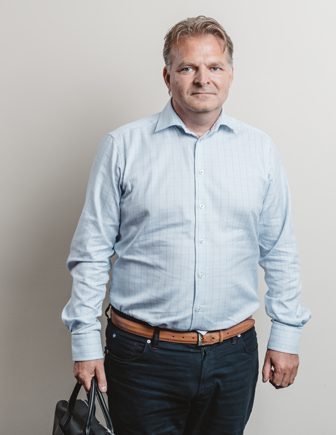
Divisiveness over the salmon farm sparked the lawsuit questioning how quickly the city has granted initial approvals, drew residents to meetings with signs of protest and led to numerous letters to local newspapers, most expressing concern.
In addition to Local Citizens for SMART Growth: Salmon Farm, which Daniels said has about 300 members connected on a listserv, there’s a petition of support for pursuing the proposal circulating on a website called DIY Roots Action, with 175 signatures.
The latter online petition, created by Belfast resident Erik Klausmeyer, is carefully worded to note that those who sign it aren’t definitely supporting the project — they just want research into it to continue.
“A group of local citizens who are opposed to this project would like it to stop without fully researching and understanding the implications,” the petition reads. “We are signing this petition to let our city know that we support them in this process, and trust that they are acting with our best interests in mind.”
Klausmeyer said via Facebook message that the petition speaks for itself but added that “the purpose of it was to have a mechanism to let the city know there is support in this community for exploring this proposal.”
On a broader scale, the Nordic Aquafarms project highlights this fact: More than 90 percent of U.S. seafood is imported, according to the National Oceanic and Atmospheric Administration. Although Maine is known for its lobster, local supermarket freezers stock salmon from Chile, swordfish from Singapore, and shrimp from Indonesia.
Could Maine become a major player in an industry looking to provide fresh, sustainable seafood raised on land? With two proposals now on the table – Nordic Aquafarms in Belfast and a much smaller project by Whole Oceans in Bucksport – at least one economic development official thinks so.
“We’ve got a lot of people knocking on our doors hoping to see success,” said Peter DelGreco, president and CEO of Maine & Co., a statewide private nonprofit that works to bring businesses to Maine and was a key part of Nordic Aquafarms’ decision to choose Belfast.
To supporters, it would be fitting for Maine to play host to a new industry that seeks to put salmon on family dinner tables throughout the country without having to fly or ship it across an ocean. But there are many local, state and federal regulatory hurdles left for Nordic Aquafarms to clear – and mounting opposition promising to keep a close eye at every step.
“It really feels like everything has been done in the most non-transparent way,” said Kate Harris, an organizer of Local Citizens for SMART Growth: Salmon Farm, which opposes the project. “It has raised a lot of concern, and fear really, amongst people. Initially, I think everyone had wanted to embrace it.”
It’s a lot more singles and doubles than home runs. I would say Nordic Aquafarms is more like a grand slam. If that project takes place, if they do even $150 million, much less $500 million, it’s likely to be the largest single capital investment in the history of Belfast.”
— Thomas Kittredge, Belfast’s economic development director
Harris and others worry that the process has been fast-tracked by city officials in an attempt to make it difficult for opponents to get organized – an assertion rebutted by the city.
Opponents question whether there would be enough fresh water to serve the salmon farm and residents, what the waste water released back into the ocean would do to the environment, and how trucks carrying the fish would impact Route 1 traffic.
Supporters say these are all reasonable questions that will be answered as the business applies for regulatory approvals. But opponents say that’s too late – they want the information now before the plant gets a green light to proceed.
“I disagree when opponents say we don’t have any information,” said Belfast Economic Development Director Thomas Kittredge. “We do have information. People are choosing to discount it or discount its accuracy or how true it is or they are just not finding it.”
Over his eight years in Belfast, Kittredge said he’s worked with other city officials to bring small and mid-sized companies to the city, including Front Street Shipyard, which has invested more than $15 million, and Trillium Caterers, which bought one of the lots in the city business park.
“It’s a lot more singles and doubles than home runs,” he said. “I would say Nordic Aquafarms is more like a grand slam. If that project takes place, if they do even $150 million, much less $500 million, it’s likely to be the largest single capital investment in the history of Belfast.”
Why Belfast?
After searching in Asia and Europe, Nordic Aquafarms – founded in 2014 in Norway – zeroed in on the United States. The company has fish production plants in Norway and Denmark and was ready to expand to new markets.
“We ended up looking more closely at the U.S. pretty much due to the U.S. being the largest single consumption market of salmon in the world and the fact that the U.S. has a very large trade deficit of fresh seafood,” Heim said.
Nordic Aquafarms wants to build a land-based salmon operation that produces 66 million pounds of salmon each year – that would be 7 percent of the current U.S. salmon consumption, Heim said. An initial phase would cost $150 million to install the first tanks, which Nordic says would be the largest in the world. When fully built-out, the facility to grow and process the fish is expected to cost upwards of $500 million and employ about 100. If all goes as planned, construction would begin next spring.
Heim said Belfast – which sits at the mouth of the Passagassawakeag River estuary on Belfast and Penobscot bays – has the right combination of fresh water; access to the ocean; a large, flat parcel of land; and a vibrant community to help attract the engineers and scientists who would be needed to do something that hasn’t been done in the U.S. on a commercial scale – raise salmon from egg to harvest.
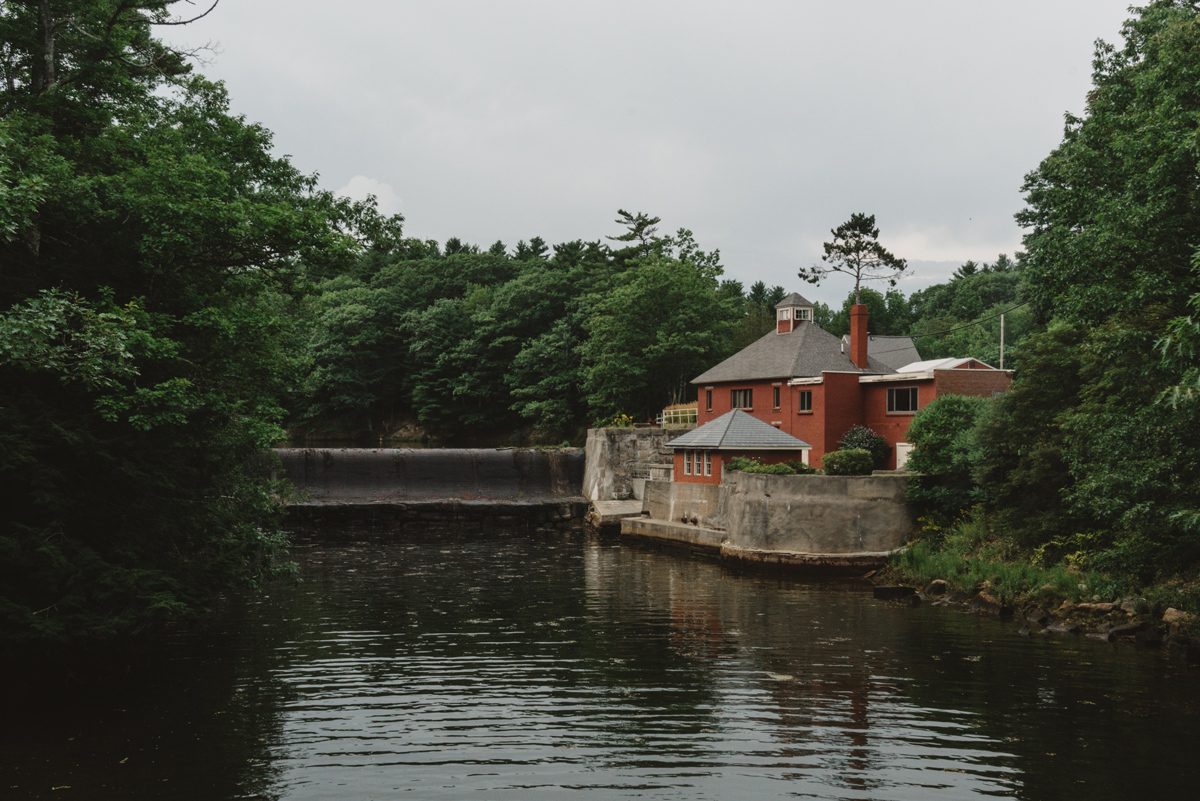
“Finding clean freshwater sources nearby ocean water resources is a very important factor,” he said. “Actually, it’s quite hard to find because many of the rivers are polluted in Maine from the old mill/factory time period. It turned out to be a little more difficult than we thought.”
A major linchpin of the project was Maine & Co. The nonprofit’s recruiters didn’t know exactly who they were dealing with when they were first approached about a land-based aquafarm, DelGreco said. The request which came when Ransom Consulting, which specializes in environmental consulting and engineering, asked Maine & Co. to compile a list of suitable Maine sites.
DelGreco’s team offered up a list of about a dozen locations in Maine. What had started as a worldwide search had been narrowed to a slice of the East Coast.
“They searched every coastal community from Baltimore north,” DelGreco said.
Part of the appeal of Belfast was that the city already had a process in place for handling new businesses. The company didn’t want to end up in an area so rural that there were no defined regulations, but it also didn’t want to land in a big city with lots of red tape, DelGreco said.
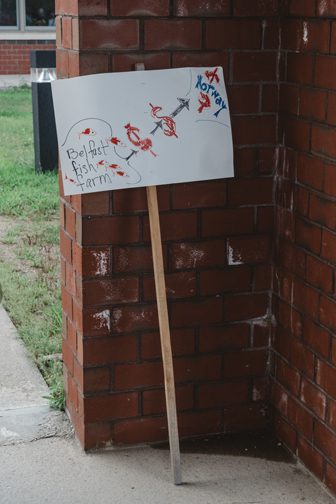
“A community like Belfast was the perfect mix,” he said. “Not too big and bureaucratic, not too small and inexperienced.”
Nordic wants to locate its operation on land owned by the Belfast Water District just off Route 1 near the Northport line along the lower Little River Reservoir. The company has purchase agreements in place to buy about 30 acres from the district, lease about 12 acres from abutter Sam Cassida and purchase 14 acres from Mathews Brothers, a window manufacturer with a factory on Perkins Road to the north of the water district land.
Nordic spokesman Ted O’Meara said the company has “firm agreements” in place to purchase or lease the parcels, but that they are contingent on the company’s ability to get necessary government approvals for the project.
For Kittredge, the city’s point person for the project, the opportunity for Belfast to expand its tax base “is a very significant part of this project.”
The company spending $500 million to build the full facility would mean lower taxes for residents and business owners, he said. The entire tax base of Belfast is now $750 million, he said.
“It’s interesting, exciting to be part of potentially a developing industry cluster,” he said.
Kitteredge said if both the Belfast and Bucksport projects come to fruition, it would create the need for other businesses to spring up to support them, including those who could provide feed.
The Science
Aquaculture is not new to Maine.
In fact, the Hallowell-based Maine Aquaculture Association – a membership organization that represents finfish, shellfish and sea vegetable growers – is the oldest such group in the country, dating to the mid-1970s, said Sebastian Belle, executive director.
In the 1990s, Maine had a sea pen salmon industry that used cages along the coast to grow salmon. Belle said the final three sea pen salmon farms eventually went out of business, in part because of new regulations imposed when the Atlantic salmon was listed as an endangered species. Assets of those companies were acquired by Cooke Aquaculture USA, a Canadian company that runs marine farms in Eastport, Machiasport, and near Bar Harbor.
The technology that would be used in Belfast – known as Recirculating Aquaculture Systems – has been around for 25-30 years, Belle said, but the companies looking to come in to Belfast and Bucksport would add newer technology. The systems use a combination of fresh water and sea water in large tanks, with much of the water filtered and reused, according to The Conservation Fund’s Freshwater Institute in West Virginia.
“It’s a technology that’s used very extensively in the existing salmon industry for hatcheries,” Belle said.
It’s also been in use at the Freshwater Institute for several years, giving the Atlantic Salmon Federation optimism that the technology is proven and viable, said Andrew Goode, vice president for U.S. Programs for the federation, which works to protect and restore wild Atlantic salmon. The federation and institute began partnering in 2011 “to assess the biological, technological and economic requirements of commercial scale, land-based salmon aquaculture,” according to an opinion piece by Goode in July for The Republican Journal, Belfast’s local newspaper.
In a phone interview, Goode said the federation hasn’t taken a position on the Belfast or Bucksport projects but believes the technology exists for these types of operations to do something the sea pen farms of the past could not – grow fish in a controlled environment that’s not detrimental to the ocean because of discharge or antibiotics.
“We’re positioned to be able to really take advantage of this industry,” Goode said, noting that Maine has a lot of land and former mill sites that lend themselves to this type of reuse. “I don’t think these two companies are the last two companies. You’re going to see a lot more.”
Maine is the last state in the country to still have wild salmon, according to the U.S. Fish and Wildlife Service. Goode said dams built in the 1800s started their decline. Despite efforts to remove dams and install fishways, there aren’t enough wild salmon to support a sustainable fishery, he said.
To get another opinion of the Nordic Aquafarms project, Belfast’s city council paid the consulting firm Deloitte $14,000 to assess the proposal. Deloitte’s report noted that while it’s common to grow fish to a small size in tanks, it’s hard to judge Nordic Aquafarms’ ability to take the fish to full size on a large scale.
In an email to Deloitte, Belfast City Manager Joe Slocum said the city wanted more information about Nordic’s reputation and financial support. The email, and others from Slocum that are related to the Nordic Aquafarms project, are on file at the Belfast Free Library following a Freedom of Access Act request by freelance writer Lawrence Reichard, who opposes the project.
“Belfast wants to know if Nordic is as reputable as they seem, that they have good access to capital and have the backing of reliable investors,” Slocum wrote in the April 11 email. “We also want to have a sense of their environmental record.”
Slocum also notes that Heim gave him the contact information for Deloitte, prompting opponents to question the reliability of the report. But Slocum indicates in the email he’s comfortable that Deloitte’s “broad background with the industry” makes it a reliable source.
In the report, Deloitte notes that the technology is “highly recognized” for raising salmon to smolt size, which is when a salmon is big enough to leave the river where it was spawned and head out to sea.
“For salmon production up to normal slaughtering size, the technology has yet to be commercially proven at a large scale over time,” the report notes. “This is mostly because of the lack of experience in implementing it; therefore, little knowledge has been gathered to fully understand the biological needs for the salmon in the grow-out phase.”
Heim disputed Deloitte’s concern about the farm’s commercial viability, saying that the technology is proven, but that the Belfast plant would just be bigger than what is currently in use elsewhere. Belle, too, insisted that the science behind the process is sound.
“RAS technology is not new,” Belle said. “The fundamental underpinning of RAS technology is to reuse water. It is inherently focused on water conservation.”
In its plants in Denmark, Nordic Aquafarms produces yellowtail kingfish – popular with sushi chefs – using land-based technology. And the company is currently building an indoor salmon farm in Fredrikstad, Norway.
On a basic level, recirculating systems use about two-thirds to three-quarters ocean water and the rest freshwater, Heim said. Nordic Aquafarms would pull water out of Belfast Bay, treat it to prevent bacteria from getting into its tanks, and use it to raise the fish. Most of it would be recirculated within the plant and reused, with a small amount pumped back into the ocean after being treated again, Heim said.
“Everything is happening indoors so you can protect your fish from parasites,” he said.
Because the fish are grown in tanks on land, it reduces the need to treat them with chemicals and eliminates concern of fish escape, which could damage wild salmon populations and is a common problem with sea pen farming, according to the Deloitte report.
Although Nordic Aquafarms has yet to submit a detailed site plan, a promotional video released by the company shows several buildings to be constructed in phases, including a smolt facility, grow out facility, fish processing plant, water treatment/recycling office and a visitor center. In all, the video shows eight buildings when the project is complete.
The Concerns
At public meetings and in interviews, project opponents express two main concerns: possible environmental impacts and how their local government has handled the proposal.
“Initially, I think a lot of us wanted to believe maybe it could be a good thing,” said Harris, of Local Citizens for SMART Growth: Salmon Farm. “They were going to be using solar panels and doing a better job than the net pens (also called sea pens).”
But as word spread about the proposal, opponents expressed concern about the amount of fresh water the company would need, whether water discharged back out into the bay would be contaminated, and why the city has acted quickly to make zoning changes necessary to clear the path for the project.
“It’s been so creepy how fast this thing has moved,” Daniels said. “Because of that, the process that has happened here has become as big and significant as the issue itself, in my view.”
It’s been so creepy how fast this thing has moved. Because of that, the process that has happened here has become as big and significant as the issue itself, in my view.”
— Ellie Daniels, Belfast resident who has filed a lawsuit against the city
After holding a Jan. 30 news conference to announce the project, the Belfast Water District on Feb. 14 petitioned the Public Utilities Commission to seek permission to sell land to Nordic Aquafarms and asked for a waiver of an eight-month public notice requirement. State approval was needed because the water district is considered a consumer-owned utility and the land that is under contract to be sold to Nordic was once used as a city water supply.
As part of the land sale, the water district agreed to sell Nordic Aquafarms a minimum of 100 million gallons of water each year at current rates, which means an additional $287,579 a year for the water district, according to documents filed with the PUC. At the maximum, Nordic Aquafarms may need to buy 262,800,000 gallons a year, the PUC documents show.
To be sure the city would have enough water to sell to nearby Northport – which contracts with the district – and to Nordic Aquafarms while maintaining a reserve, the water district hired an engineer to study capacity.
Engineer Rick Pershken of A.E. Hodsdon Engineers determined that the city hasn’t used the Little River water source where the salmon farm would be built for 38 years. Instead, Belfast gets its groundwater from a different aquifer. Part of the reason for the water reserve is that since 1980, “there has been a significant decrease in water use by district customers as part of poultry and fish processing and canning facility closures,” the PUC documents show.
The commission ultimately gave the water district permission to sell the land and granted the waiver of the typical eight-month process, but the examiners’ report made it clear the PUC was not happy about having to expedite the approval. It noted that the reason for the notice is to give the commission and “other interested persons a reasonable opportunity to review and process the proposed sale of water resource land.”
“By contractually shrinking that review period from eight months to three and a half months, the District created the very realistic possibility that the Commission would not be able to complete its review in the requested period of time,” the report stated.
The examiners also wrote that they wanted to put the Belfast Water District and other similar utilities in the state on notice that PUC staff may not grant similar requests in the future “due to lack of sufficient time for the Commission and other interested persons to review the underlying proposed transactions.”
But the report notes that the Belfast Water District complied with state law, both to allow the sale to go through and to qualify for the waiver of the eight-month notice requirement.
At an August meeting of Belfast’s Planning Board, several members of the public questioned what would happen if there’s a drought or if anyone has considered whether climate change would mean more drought-like conditions for Waldo County and other parts of Maine.
The other major environmental concern – what gets pumped back into the bay – is something Heim has said he’ll more fully discuss at a public meeting later this month.
During an August interview, Heim said his company would run a pipe about a mile out into the ocean so anything that leaves the fish farm would quickly dissipate. It also would be filtered to remove 99 percent of food, feces and other substances before it is released, according to Deloitte report.
For some in the city, though, the idea of allowing an industry to discharge into the bay brings back memories of the poultry farms that once used the ocean as a dumping ground.
Two poultry plants built between 1945 and 1956 led Belfast to become known as the “broiler capital of the world,” a plaque at the Belfast Historical Society explains. Although they employed 2,000 people and supported other businesses, factories left another type of legacy.
“They also polluted the harbor and bay, drained the economy of diversity and fixed an image of Belfast as a low-paying, hardscrabble place in the minds of locals and visitors,” the plaque says.
Competition and other issues, including environmental controls, brought about the closure of the poultry plants in the 1980s.
For Harris, that history and the current shift toward organic farming in the area don’t seem compatible with a large-scale fish farm.
“We’ve sort of evolved as a community away from that to being a place where people care about supporting your local farmers and organic methods where they can,” she said.
But Belle, who works with aquaculture companies across the state, said those types of decades-old water pollution problems should not be a modern concern.
“I can say with a huge amount of confidence that there’s no way they will be allowed to discharge something that’s going to be harmful into the environment,” he said. “It will not happen.”
In the face of this outpouring of concern, the council nevertheless again moved forward, at your request, and unanimously voted 5 to 0 to approve the needed zoning change.”
— Joe Slocum, Belfast city manager
When it comes to the government process, the lawsuit filed by Daniels and Broderick lays out what they believe to be clear violations of city ordinance and state law.
Their suit, filed in July, asks the court to determine that a City Council vote taken April 17 to amend the city’s zoning ordinances and comprehensive plan be set aside.
“The City Council did not follow the citizen participation procedures required by (state law) including the appointment of a planning committee that would hold public hearings and solicit and consider a broad range of public review and comment before making recommendations to the City Council for an amendment to the comprehensive plan,” the lawsuit states. “The City Council took actions to purposely avoid any citizen participation in any planning process related to amending the comprehensive plan to allow the proposed Nordic project.”
In its response, the city wrote in its court filing that there were multiple public meetings and hearings that allowed residents to weigh-in on the proposal. It refuted nearly all claims in Daniels’ and Broderick’s suit and asked a judge to deny their request to throw out the previous city votes.
When describing the process for public input, City Attorney William Kelly wrote in court documents that city officials received “several hundred writings, comments, presentations, opinions, anecdotes and poems from the public.”
Two days after the April 17 vote, an email exchange between Slocum and Heim backs up assertions that the city acted quickly to grant initial approvals at the company’s request — and that Heim is increasingly worried about public opposition.
“The city, in less than four weeks, received 143 letters and numerous personal pleas calling for the rezoning process to slow down, because there is confusion, ignorance and misinformation as well as unanswered questions,” Slocum wrote to Heim. “In the face of this outpouring of concern, the council nevertheless again moved forward, at your request, and unanimously voted 5 to 0 to approve the needed zoning change.”
He added: “I cannot think of a community anywhere that has done so much, in so short a time, to successfully advance a project that is touted as being the largest of its kind in the world.”
In response, Heim wrote that while he appreciates the city council’s unanimous vote, he was surprised by the opposition “after this location was pitched to us as well suited.”
“I have asked a number of times if this project is right for Belfast and I have been assured it is,” Heim wrote. “We have no wish to impose ourselves on a community – I hope our communication has been clear here from the start.”
Mayor Samantha Paradis, responding to questions via email, said the city council “always intended to have a transparent public process where the public can offer comment.” She said the zoning changes will be reviewed again by the council, following a Planning Board recommendation, and another round of public hearings will be held this fall before another council vote is taken.
Paradis said she’s looking forward to getting more specifics about the proposal and in particular, wants to know more about the “water use and discharge” concerns raised by opponents.
“I am optimistic about the proposal,” she said. “I am looking forward to learning more specifics as the due diligence and permitting process continues.”
I have asked a number of times if this project is right for Belfast and I have been assured it is. We have no wish to impose ourselves on a community – I hope our communication has been clear here from the start.”
— Eric Heim, CEO of Nordic Aquafarm
City officials and Heim say they believe they’ve taken extra steps to release information to the public and respond to questions. Heim said he’s cautious about the information he puts out, wanting to make sure he has verified everything.
“I respect that there are a few people against it,” Heim said in August. “My impression is the majority have been very positive.”
The process was largely the focus of public comment at an August Planning Board meeting, where the city laid out seven updates to city ordinances that would be necessary for the Nordic Aquafarms project to move forward. Some changes would give Belfast more power to regulate the new industry, said City Planning Director Wayne Marshall.
He also said the city has already reached out to a hydrogeologist to study many of the issues raised by opponents.
At the August meeting, many comments focused on slowing down the process to allow more time for public consideration.
Opponents gathered outside with signs – “Planning Board: Please Protect Our Water!!” and “We are the Heart Restore Citizen Participation” – and for a news conference before the meeting led by Daniels, where she highlighted the process used by the city.
Opponent Lawrence Reichard, the freelance writer who obtained the emails between Slocum and Heim, said the concerns about water are legitimate.
“In the face of climate change, we simply don’t know what will happen with our aquifers and watersheds or how much load they can handle,” he said. “If the city of Belfast approves the Nordic Aquafarms fish farm, it will be making a huge gamble with the future of our water.”
While city officials say they want to help address concerns, the economic development director said there’s likely a set of opponents who will never support the project.
“If it happens, it’s going to be a big building, that’s no doubt,” Kittredge said. “If people are against a large building, I don’t know how to get around that. It’s land-based aquaculture, that’s their activity. If people don’t like land-based aquaculture or like the idea of salmon being raised indoors, I don’t know how to get around that because that’s what their product is.”
Industry of the future?
As Belfast wrestles with the pull of new industry and weighs tax revenue versus citizen fear about hosting what could be the world’s biggest land-based salmon farm, supporters say change is coming – like it or not.
O’Meara, the Nordic Aquafarms spokesman, said as Maine looks to develop its future, it must to consider what industries it wants to attract. While there were once six mills on the Penobscot River, there are now none.
“Clearly things are changing and if you’re looking forward, this is a really exciting new opportunity for the state involving the natural resources we have, the brand we’ve developed, plus new technology, new knowledge coming in,” he said.
Heim said while Maine looks to attract new industry, it may want to play a role in filling what’s expected to be a worldwide need for more food. A United Nations panel in 2009 and a 2011 study published in the National Academy of Sciences concluded that global food demand will double by 2050, driven by population increases and an improving quality of life in some countries, including China.
And for those who say they want their fish to come from the ocean, Heim said pollution, rising sea temperatures and a lack of wild salmon makes that almost impossible.
“If you look at the international level, we’ve overfished our high-value fish,” he said. “At the same time, you have rising sea temperatures, which has turned everything on its head. You have microplastic issues, you have so many things happening and we don’t know the end game of this. To what extent can we depend on the oceans to deliver two or three decades in the future? We don’t know.”
Belle, of the aquaculture association, said Bucksport and Belfast are poised to lead the state in a new direction.
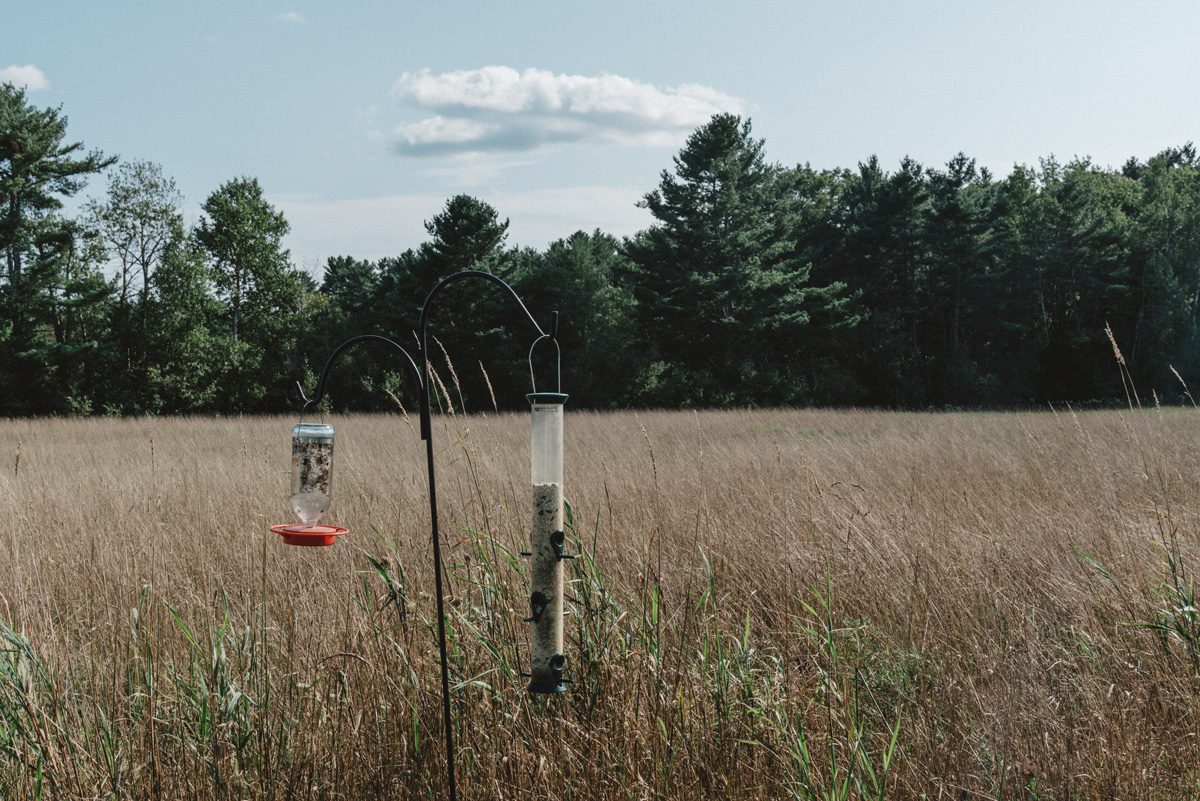
“Both of these projects are cutting edge and early in the development cycle,” he said. “The fact that we have two well thought-out, well-planned, well-capitalized projects that have decided to come to Maine instead of somewhere else I think bodes well for Maine’s future.”
For Daniels and Broderick, the battle over the potential for a large-scale fish-growing operation will continue. Daniels, who has owned The Green Store in downtown Belfast for 25 years, said she believes there are too many risks to freshwater and ocean water to take a chance on a new industry.
“I think we are a very small state and we have a small amount of experience with big industry, and most of our governmental organizations are staffed by volunteers who are naïve as to what can actually happen when you have a large international corporation come in to your town when they need water and land,” she said. “The threat isn’t going to be just here. It’s up and down the coast.”

